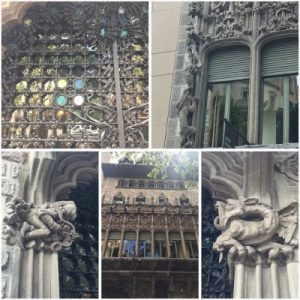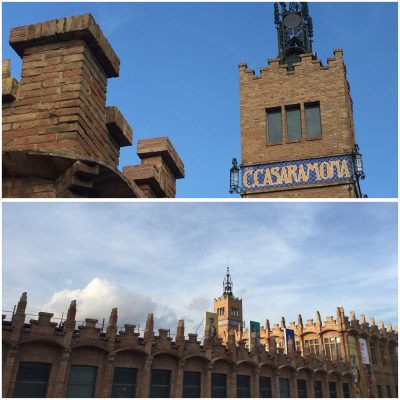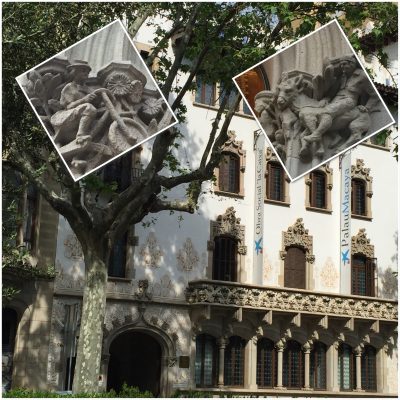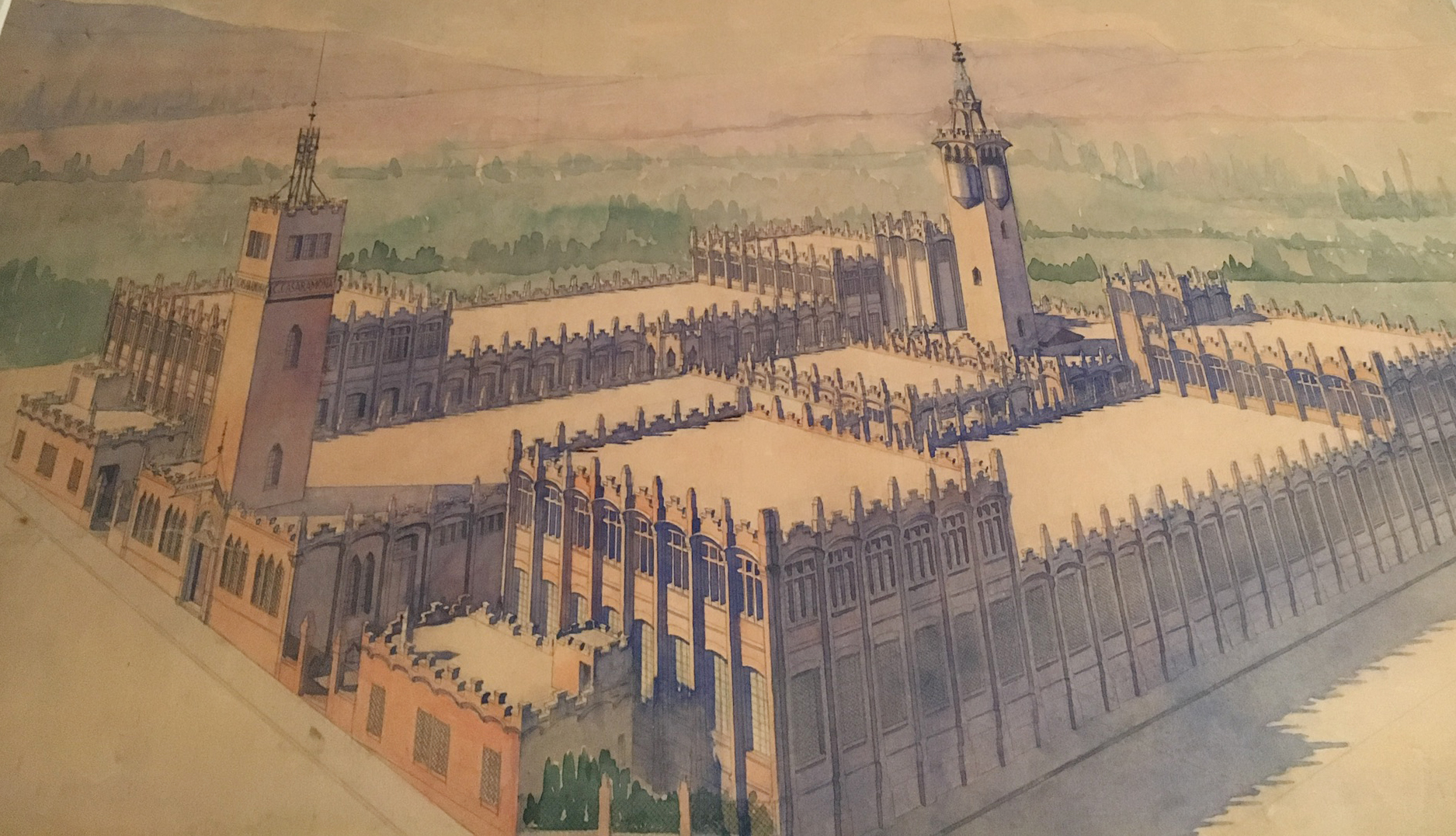The architecture of Josep Puig i Cadafalch is as ever present in Barcelona as Antoni Gaudí’s. Last year Barcelona celebrated the 150th anniversary of Cadafalch’s birth! So there is no better time than now to learn about Josep Puig I Cadafalch.
Josep Puig I Cadafalch was born on October 17th 1867 in Mataró, Spain. Puig i Cadafalch was an interesting and very accomplished person. During his life he achieved a perfect synthesis among his three passions: architecture, politics, and history. Puig i Cadafalch mastered his skills of architecture under Lluis Domènech i Montaner, who was one of the most acclaimed representatives of Catalan modernism in Spain during the time. You can see the mixture of different inspirations in Puig I Cadafalch’s work throughout Barcelona.
Let’s explore some of the works he did in Barcelona!
The House of Les Punxes

The House of Les Punxes, commonly called the“Princess Castle,” was inspired by Central European Gothic architecture. Puig I Cadafalch designed the house for the Terrades Sisters in 1905. In 1976 the House of Les Punxes was declared a historical monument of national interest.
The stained glass windows and wrought iron will definitely impress you, they are magnificent! The house, which is a combination of three smaller ones, is a total work of art. Also, visiting this house allows you to immerse yourself in the history and legend of Sant Jordi, and you can enjoy an audiovisual tour through the legend.
Activities:
While visiting the house you can access the roof. There you can discover information about Puig i Cadafalch and about life in Barcelona from the late 19th century to the early 20th century. Kids will love the scavenger hunt for information in the six towers on the roof, and the story of the Dragon, Princess, and Knight! Also, there is a game of questions about Dragons on interactive tables for those who are curious about the ancient animals.
The Palau del Baró de Quadras
 The Palau del Baró de Quadras was built between 1904 and 1906. Located on Avinguda Diagonal, now houses the Instituto Ramón LLul (promotion of Catalan language and culture).
The Palau del Baró de Quadras was built between 1904 and 1906. Located on Avinguda Diagonal, now houses the Instituto Ramón LLul (promotion of Catalan language and culture).
in its Gothic-inspired façade of northern Europe, is the figure of Sant Jordi and the Dragon.
The Serra House

The Serra House is easily recognizable by its twin towers and peaks similar to those of the House of Les Punxes. Located at the crossroads of Avinguda Diagonal and Rambla Catalunya, it is currently the headquarters of the Diputació de Barcelona.
The Amatller house

If you’ve been to Barcelona before then you have probably seen the Amatller House. However, you might not have noticed the house at first. In fact, the Amatller House’s neighbor is none other than the Casa Batlló, a famous building by Antoni Gaudí.
The Amatller House House is one of the top five most well known modernist buildings in Barcelona: the house Lleó Morera, the house Mulleras, the house Bonet, the house Batlló and the house Amatller. Called “The apple of discord” in clear allusion to Greek mythology. The term discord also originates from the rivalry between Domènech i Montaner, Puig i Cadafalch and Antoni Gaudí, especially in the showiness of its facades.
On the ground floor you will find a chocolate shop that pays homage to its former owner Antoni Amatller.
The Fàbrica Casaramona

An old textile factory of the early twentieth century, owned by Casimir Casaramona who commissioned Puig i Cadafalch for its reconstruction after it burned down. Although after the death of its owner, it never served as a factory. Instead, it became a barracks for the national Police up to 1992 in which it was acquired by the La Caixa Foundation becoming the Social and cultural Center, Caixaforum.
The Palau Macaya

Located in Passeig Sant Joan near the metro stop Verdaguer, its original owner Romà Macaya commissioned its construction to Puig i Cadafalch. After the Civil War, the house was bought by La Caixa to become cultural center and exhibition space.
On its facade, there is a character on bicycle: it is Puig i Cadalfach!
El Poble Espanyol

The town that represents the soul of Spain was built for the Universal exhibition of 1929. Buildings, squares and streets of different areas of Spain remain marked with lasting constructions from the Universal exhibition of 1929. Coming here is a great opportunity to discover Spain’s architectural heritage in one day!
Children love to be able to move freely around the village and enjoy the play space. The Poble Espanyol offers many activities for the whole family; you can consult your agenda here.
The house of Josep Puig i Cadafalch
Cadafalch’s house is located in carrer Provença, house number 231. It was built in 1917 for personal use. It can be recognized by its beautiful blue door!

All we have to do is wish you a happy discovery of Puig i Cadafalch with your family!


